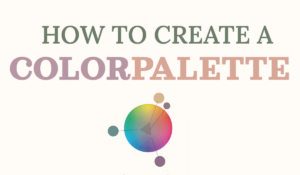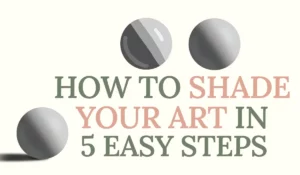Ever heard of an underpainting before? Let me tell you, they come in handy.
An underpainting, or underdrawing, is the first layer of paint you apply to your canvas to either help establish values or to get rid of the white of the canvas. Using an underpainting is not necessary but it has great benefits.
Keep reading to find out everything about underpainting techniques!
This article may contain affiliate links at no extra cost to you. AF links help support this blog so that it can exist and expand for years to come!
Underpainting technique explained
An underpainting is exactly as the name describes: a painting that goes under another painting. There are a few different underpainting techniques but they all do the same thing: breaking down the painting process into extra steps.
That’s why using the underpainting technique is called indirect painting. The opposite of indirect painting is, as you might’ve guessed, called direct painting.
The main benefit of using an underpainting is to establish values. This takes away the complexity of working direct, which is when you have to think about value, hue, and saturation all at once.
By making an underpainting you paint the values in monotone, meaning only one color. This layer needs to be thinned (following the fat-over-lean rule). After your underpainting is dry you paint on top of it.
How to make an underpainting
Underpaintings are usually used with oils but can be used with acrylics as well. When you work with oils you follow the fat-over-lean method: Thinned-out paint on the first layers, and the last layers are increasingly less thinned out.
Feel free to read Hue, saturation and value easily explained to understand this whole process a lot better!
How to make an underpainting:
- Paint the values using 1 color
- This layer needs to be thinned as there will be multiple layers on top of it
- See this layer as a guide for future layers
- Let dry
- Add your first paint layer. This layer must be transparent which is called a glaze. Its main purpose is to add hue and saturation. The value is determined by your underpainting.
- The underpainting will shine through because of the transparency of this layer
- Keep adding extra paint layers (glazes) until you’ve covered your entire underlayer.
That’s it!
What are the different underpainting techniques?
There are two main purposes of underpainting techniques:
- A stain
- Tones your canvas to get rid of the white
- Fills in gaps
- Shines through so that your painting looks cohesive
- Great for artistic freedom
- Monochromatic values
- Used to establish values
- Breaks down the painting process into a more comprehensible method
- You can focus on values only which means less room for error in the final result
A stain, which is also referred to as toning, is when your underpainting exists out of 1 single color. This color is meant to shine through the nooks and crannies of your paint layers.
You always miss certain spots so instead of white showing up, you see that underpainting showing up. The same color keeps popping up which results in a cohesive look.
An underpainting with monochromatic values is the most popular underpainting technique. It allows you to paint out and focus on values alone so you don’t have to worry about that later.
Let’s talk about the best (and most used) underpainting techniques.
The different underpainting techniques are called:
- Imprimatura
- Grisaille
- Verdaccio
Imprimatura
The painting technique imprimatura:
- It’s a stain
- You apply one single thinned-out color to the entire canvas
- Used by artists that are intimidated by the white of the canvas
- Used when you want bits and pieces of a certain color to peek through
- Usually, earth tones but bold colors can be used as well
- Most often a complimentary color of your overall color palette is used
- E.G. If you draw a wintery scene you use an orange color
It’s also done a lot with earth tones so that when you forget to paint over a bit it isn’t distracting. However, if you choose a bold color it has a fun and playful effect.
Grisaille
Grisaille is one of the most common underpainting techniques:
- Monochromatic value underpainting
- Only black and white are used resulting in a monochromatic gray-toned underpainting

Verdaccio
Verdaccio is an Italian term that translates to greenish. The Verdaccio underpainting technique is:
- A monochromatic value underpainting using yellow
- Since black sometimes has some blue in it your results may look greenish-yellow hence the name
- Done by the old masters
As you see the different underpainting techniques all do the same thing, it’s just that the colors are different. Except for Imprimatura, where you only stain your canvas.
Underpainting vs no underpainting
As you now know direct painting is when you skip the underpainting and go straight in. There’s no plan, you simply paint wet on wet.
No need to let the paint dry and spend multiple sessions on a single painting whereas indirect painting (using an underpainting) is when you break down the painting process and paint values first.
Here’s a video by MazArtStudio in which she shows a comparison between using and skipping an underpainting:
Pros and cons of an underpainting
Here are some other pros and cons of using an underpainting:
Pros of using an underpainting:
- Breaks down a complicated process
- By breaking down color (taking care of values first, leaving hue and saturation)
- Less stress
- More accurate
- Underpainting may peek through which adds interest
Let’s go to the cons of using an underpainting!
Cons of using an underpainting:
- A lot more time-consuming than skipping an underpainting
- Not as intuitive as direct painting
Should you always do an underpainting?
Whether or not you should always do an underpainting is completely up to your preference. The benefit of doing an underpainting is that you are in more control. You are able to map out every stroke you do and your underpainting acts as a guide.
The disadvantage of doing an underpainting is that it adds more time to your painting process.
Underpaintings is how the old masters did it. That is not to say that without it you can’t create photo realistic paintings.
What is the best color for an underpainting?
The best color for an underpainting is typically an earth tone like Sienna Brown, or the complimentary color of your color scheme. Other paint colors that can be used are:
- Burnt Umber
- Burnt Sienna
- Yellow Ochre
This Burnt Sienna by Winsor & Newton is very popular to use for underpaintings!
Underpainting examples
Here are some underpainting examples:
FAQs about the underpainting technique
These are the main questions people ask about underpaintings:
What is the underpainting technique called?
The underpainting technique is called indirect painting. Different underpainting techniques are Grisaille, Imprimatura, Verdaccio and many more.
what is the traditional underpainting color?
Traditionally underpaintings are in earth tones or are in grayscale.
Do you let an underpainting dry before painting?
It’s best to let an underpainting dry before painting on top of it. This is to make sure you won’t disturb the underpainting.
Why use orange as an underpainting?
An orange-hued underpainting is often used because it’s an earth tone. It’s great for portraits because it closely matches skin, it’s an earth color so it goes great with landscape paintings and it is complementary to blue which goes great with wintery scenes.
How to choose an underpainting color?
Choosing an underpainting color is up to you. Mostly earth tones like Sienna Brown is used or grayscale. You can also go for complimentary colors. Just make sure to keep your underpainting monochromatic, meaning one color.
Difference underpainting vs toning
The difference between and underpainting vs toning is that toning is an underpainting but an underpainting isn’t always toning. The other underpainting technique would be a monochromatic value painting. Toning is simply using 1 color to tone the canvas.
Do you sketch before an underpainting?
You can sketch before doing an underpainting but it’s not needed. Use a prime spray after your pencil sketch to avoid disturbing the graphite when applying paint on top of it.
I hope you now understand how underpaintings work. Are you going to use it? Feel free to let me know in the comments down below. If you liked this article you may want to sign up for my monthly art letter.
See you next week!
♡ Laura





Thanks for the excellent tutorial on underpainting. I have been painting ‘without instruction’ for decades and realized that I was missing a technique. Clearly under painting is it. I’m eager to dig into a new painting to try the technique out.